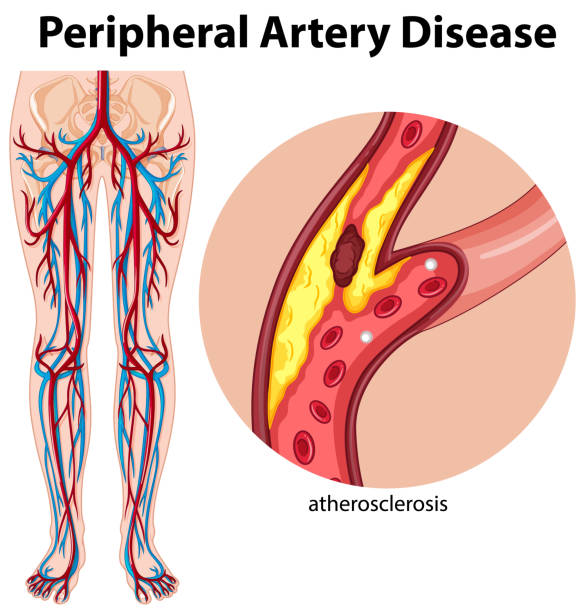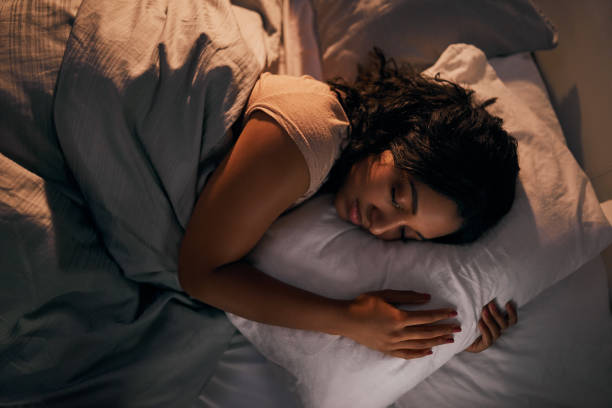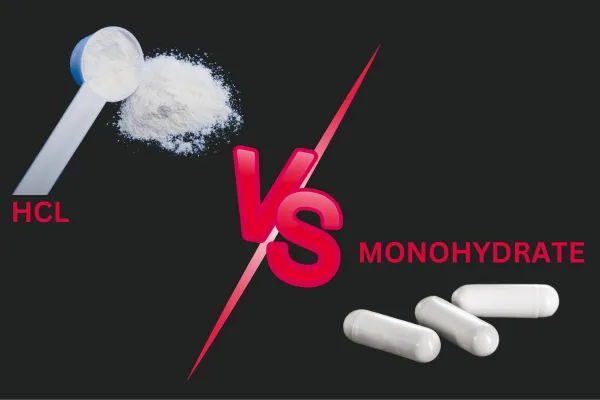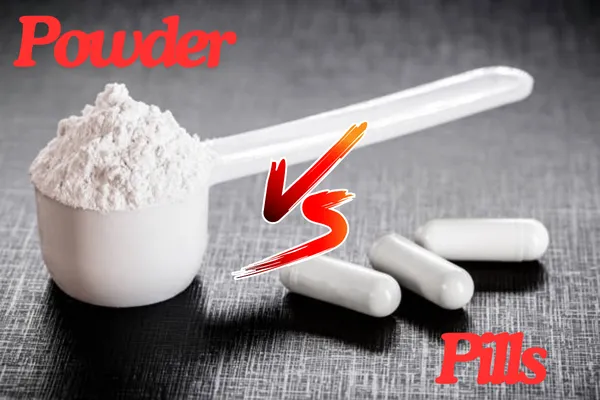The Best Sleeping Positions for Peripheral Artery Disease
The Best Sleeping Positions for Peripheral Artery Disease
Peripheral artery disease (PAD) is a condition where the peripheral arteries that supply blood to the legs and feet become narrowed or blocked.
This restricts blood flow, leading to poor circulation and symptoms such as leg pain when walking. Choosing the right sleeping position can help improve circulation and alleviate PAD symptoms.
Read on to learn about the best sleeping positions for peripheral artery disease and how to get a good night's sleep if you have PAD.

What is Peripheral Artery Disease?
Peripheral artery disease (PAD) is also called peripheral arterial disease. It is a common circulatory condition where the peripheral arteries become narrowed due to a buildup of plaque.
PAD most often affects the arteries in the legs but can also impact arteries supplying blood to the arms, stomach, head, and kidneys.
PAD occurs when plaque accumulates in artery walls and restricts blood circulation.
Plaque is made up of cholesterol, fatty deposits, cellular waste, calcium, and fibrin. As we age, arteries naturally narrow and harden.

But in people with PAD, this hardening process is accelerated due to risk factors like smoking, obesity, high blood pressure, high cholesterol, and diabetes.
The reduced blood flow caused by PAD means the muscles and other tissues in the legs and feet can't get enough oxygen and nutrients.
This causes leg pain and other PAD symptoms. As PAD worsens, critical limb ischemia can develop when blood flow is severely reduced.
This greatly increases the risk of tissue damage and limb amputation.

Common Symptoms of PAD
Early on, PAD may not cause any symptoms. As arteries narrow more, the common signs are:
- Leg pain, aching, cramping, numbness, or tiredness in your legs or feet when walking or exercising. This is called intermittent claudication.
- Leg or foot pain at rest that often disturbs sleep
- Foot or toe wounds that are slow to heal
- Weak pulse in the legs or feet
- Cold, pale skin on the legs or feet
- Hair loss on the legs
- Erectile dysfunction in men
The severity of symptoms depends on the amount of blood flow reduction. Without treatment, PAD can worsen over time.
Critical limb ischemia is an advanced stage of PAD that causes chronic ischemic rest pain, ulcers, or gangrene.
Prompt medical care is essential to stop PAD progression.

Who is at Risk for Developing PAD?
Certain factors put you at increased risk of developing peripheral artery disease:
- Age - PAD risk rises as you get older, especially after age 70
- Smoking - Current and former smokers have a far higher risk of PAD
- Diabetes - Especially if blood sugar levels are poorly controlled
- Obesity - Excess weight strains the heart and blood vessels
- Metabolic syndrome - High blood pressure, blood lipids, and blood sugar
- Family history of PAD, heart attack, or stroke
- Lack of exercise
- High cholesterol
- Chronic kidney disease
Lifestyle changes and medical treatment can reduce the risk of developing PAD or help manage the condition.

How Sleeping Positions Affect PAD
Choosing the right sleeping position is important for anyone with PAD. When you sleep, your heart rate and blood pressure drop as your body relaxes.
Certain sleeping positions can constrict blood vessels, decreasing circulation. Without adequate blood flow, PAD symptoms like leg pain may worsen at night.
Avoid Sleeping on Your Back
Sleeping fully on your back is not recommended for people with PAD. Doctors call this supine sleeping.
When lying flat on the back, the weight of your legs presses on the blood vessels. This can further limit blood circulation that is already compromised by PAD.
Sleeping only on your back can also worsen obstructive sleep apnea, which is more common in people with PAD. With sleep apnea, the airway collapses during sleep, reducing oxygen levels.
About 30% of people with PAD have obstructive sleep apnea due to shared risk factors like obesity.

The Best Sleep Positions for PAD
The ideal sleeping positions for PAD allow gravity to assist blood circulation in the legs and feet. Consider these options:
Sleep on Your Side
Sleeping on either side is recommended by doctors for people with PAD. It takes pressure off the back and hips while helping blood flow return from the legs.
Draw your legs up slightly and put a pillow between your knees for comfort and support.
Use plenty of padding under your body to prevent pressure sores if you will be confined to bed rest. Rotate from side to side during the night. Use a body pillow for comfort and support.
Prop Up Your Legs
Keep your head elevated on a pillow as usual. Place a pillow under your calves to elevate your legs 6 to 12 inches.
This simple position prevents your legs from pressing down on the mattress in a way that could restrict circulation.
Alternatively, you can use a foam wedge pillow to raise your legs above heart level. This uses gravity to promote blood flow back to the heart.
Avoid Crossing Your Legs
At all times, avoid crossing your legs or ankles when sitting or lying down. Crossing your legs can constrict blood vessels and worsen PAD symptoms in the affected limb.
Consider an Adjustable Bed
Beds that can raise and lower the head and legs allow you to adjust your sleeping position as needed.
This may be helpful for relieving nighttime leg pain and promoting circulation.
Other Tips for Better Sleep with PAD
Along with choosing the right sleeping position, here are some other ways to improve sleep if you have PAD:
- Take pain medication before bed if prescribed by your doctor to prevent nighttime leg pain from disturbing sleep.
- Avoid caffeine close to bedtime and practice good sleep hygiene. Having a nightly bedtime routine helps signal your body it's time for rest.
- Manage stress through relaxation techniques, therapy, or medications if anxiety is harming your ability to sleep.
- Use a heating pad or warm bath before bed to stimulate blood vessels and circulation.
- To alleviate swollen feet or ankles, elevate your legs periodically during the day and avoid sitting still for long periods.
- Treat sleep apnea if present. This may involve lifestyle changes or use of a CPAP machine during sleep.

Treatment for Peripheral Artery Disease
While lifestyle changes like quitting smoking, exercise, and managing risk factors are important, medical treatment is also needed for PAD.
Treatment options may include:
- Medications - Such as anti-platelets, statins, ACE inhibitors, beta blockers, calcium channel blockers, or cilostazol to improve symptoms.
- Angioplasty and stenting - A catheter with a balloon is inflated to widen the artery and a stent is placed to keep the artery open. This helps restore blood flow.
- Atherectomy - A tiny device on a catheter is used to remove plaque from the artery.
- Bypass surgery - Blood flow is rerouted around a blocked artery using a grafted vein or artery.
Prompt PAD treatment can prevent progression of the disease, reduce leg pain, help wounds heal, and improve walking ability and quality of life.
Make sure to see your doctor regularly to monitor PAD.
Report any worsening symptoms like increased leg pain when resting or skin ulcers.

The Takeaway
Peripheral artery disease causes narrowing of the peripheral arteries, usually those in the legs. This restricts blood flow, resulting in leg pain and poor circulation.
Choosing the right sleeping position is important for managing PAD symptoms and promoting blood flow during sleep.
The best sleeping positions for people with PAD allow gravity to assist circulation in the legs.
This includes sleeping on your side, propping up your legs with pillows, and using an adjustable bed.
Avoid sleeping only on your back. Along with treatment from your doctor, proper sleep positioning and good sleep habits can help improve PAD symptoms for better sleep and overall vascular health.

Frequently Asked Questions About Sleep Positions for PAD
What is the best sleeping position for peripheral artery disease?
The best sleeping positions for peripheral artery disease (PAD) are sleeping on your side with a pillow between your knees or propping your legs up with pillows.
This improves blood circulation to the legs and feet.
Avoid sleeping only on your back, also called the supine position, as this can restrict blood flow.
What should PAD patients avoid when sleeping?
PAD patients should avoid sleeping flat on their back as well as crossing their legs or ankles when lying down.
These positions can reduce blood circulation.
PAD patients are also more prone to sleep apnea, so try sleeping on your side instead of only on your back.
How does poor sleep affect peripheral arterial disease?
Poor sleep quality can worsen symptoms of peripheral arterial disease (PAD). Getting inadequate sleep may raise inflammation, increase blood pressure, and constrict blood vessels - all potentially exacerbating PAD.
PAD symptoms like leg pain can also disrupt sleep.
What sleeping positions help improve circulation?
Sleeping positions that improve circulation include: sleeping on your side with legs slightly bent, using pillows to prop up your legs above heart level, and elevating the head and feet in an adjustable bed.
These allow gravity to promote blood flow back to the heart.
How can I reduce my risk of developing PAD?
To reduce your risk of developing peripheral artery disease, quit smoking, control conditions like diabetes and high blood pressure, lower cholesterol, lose weight, exercise regularly, and eat a healthy diet.
Getting adequate sleep and managing sleep apnea are also recommended.
What lifestyle changes help manage PAD?
Lifestyle changes to help manage PAD include regular exercise, eating a low-fat diet, maintaining a healthy weight, quitting smoking, limiting alcohol, controlling diabetes, lowering cholesterol, and following your doctor's recommended treatment plan.
Proper sleep positioning can also alleviate PAD symptoms.
Why do PAD patients experience leg pain?
PAD patients experience leg pain because plaque buildup narrows arteries and restricts blood circulation to the legs and feet.
The muscles don't receive enough oxygen and nutrients, causing aching, cramping, or tiredness during activity.
Leg pain at rest, slow wound healing, and cold limbs can also occur as PAD advances.
How does PAD narrow the arteries?
Peripheral artery disease narrows arteries through a process called atherosclerosis. Fatty deposits and plaque build up within artery walls.
Plaque contains cholesterol, cellular waste, calcium, and blood components.
This accumulation inhibits blood flow, especially in the arteries supplying the legs and feet.
What health problems are associated with peripheral artery disease?
Peripheral artery disease is associated with an increased risk of heart attack, stroke, limb amputation, poor wound healing, erectile dysfunction in men, and death.
PAD and coronary artery disease share similar causes and risk factors. Obstructive sleep apnea is also more common in people with PAD.
How can I improve my sleep quality if I have PAD?
To improve sleep quality with PAD, find a comfortable sleeping position that promotes circulation, take pain medication before bed if needed, use heating pads or warm baths, elevate swollen legs periodically, and treat sleep apnea if present.
Avoid caffeine at night and follow good sleep habits.

Expert Opinion from Dr. Sarah Thompson, Vascular Surgeon
"Peripheral artery disease is a condition where the arteries that supply blood to the limbs become narrowed or blocked, often due to the buildup of plaque.
This restriction in blood flow can lead to leg pain or cramping when walking, which is one of the main symptoms associated with PAD.
For individuals with PAD, maintaining good sleep and circulation is crucial for overall well-being.
Poor blood circulation, especially at night, can exacerbate symptoms and potentially lead to tissue damage in the extremities.
That's why choosing the right sleeping position is so important.
Compared to sleeping on your stomach or side, the supine position (sleeping on your back) with legs slightly elevated can significantly improve blood flow to the limbs.
This position helps distribute body weight evenly and prevents excess pressure on the arteries, allowing for better circulation.
People with PAD may also experience sleep disorders like obstructive sleep apnea, which can further impair blood flow and increase the risk of heart attack and stroke. A comprehensive treatment plan that addresses both the disease and sleep-related issues is crucial.
In advanced stages of PAD, the risk of peripheral artery disease complications, such as non-healing wounds or even limb amputation, increases significantly. Proper sleep and circulation can help alleviate symptoms and promote better healing.
I always recommend my PAD patients elevate their legs slightly while sleeping to facilitate blood flow to the extremities.
This simple adjustment, along with other lifestyle changes like quitting smoking and regular exercise, can make a big difference in managing PAD and improving overall quality of sleep.
If you experience any persistent leg pain, cramping, or other concerning symptoms, don't hesitate to book an appointment with your healthcare provider.
Early detection and treatment are key to preventing further complications and maintaining healthy circulation."
For More Training Advice + Diet and Lifestyle visit us Combat Creatine
PS: Make sure you check out the rest of our Training Guides:
Creatine
Creatine Supplements Ultimate Guide
Creatine Supplementation Side Effects
Best Creatine Monohydrate Gummies Review: Top 10 Best Creatine Gummies
Triceps
12 Best Long Head Tricep Exercises + Tricep Workout Ideas
Top 17 Tricep Extension Exercises | Triceps Extension Variations Guide
Perfecting the Triceps Pushdown: Tricep Pushdown for Upper Body Strength
10 Best Medial Head Tricep Exercises -Combat Creatine10 Best Lateral Head Tricep ExercisesThe Best Triceps Stretches to Loosen and Improve Flexibility
Understanding Triceps Tendonitis: Causes, Diagnosis, and Treatment for Elbow Pain
Tricep Dips Exercise Guide: Master The Triceps Dip
30 Best Tricep Exercises | Review The Best Triceps Exercises
Are Triceps Push or Pull? Push-Pull Workout
Biceps
12 Best Bicep Tendonitis Exercises | Biceps Tendon Treatment
The 10 Best Kettlebell Bicep Exercises for Bigger, Stronger Arms
The 14 Best Resistance Band Bicep Exercises | Top Biceps Resistance Band Exercises
The 14 Best Short Head Biceps Exercises | Short Head Bicep Exercise Workout
17 Best Long Head Bicep Exercises | Top Biceps Exercise
The 20 Best Bicep Exercises | Best Biceps Exercise & Bicep Workout
Get Stronger Biceps with a Bicep Curl Machine
Chest
13 Cable Chest Exercises to Build Bigger Pecs
The Spoto Press: How This Unique Bench Press Variation Can Boost Your Bench
The 10 Best Chest Exercises for Building Muscle
10 Best Dumbbell Chest Exercises for Building Your Pecs
The 5 Best Chest Exercise Machines for Maximum Growth in 2024
5 Best Compound Chest Exercises for Building a Bigger Chest
16 Best Kettlebell Chest Exercises: Pump Up Your Pecs
5 Best Chest Workout Machines for Maximum Muscle Growth
6 TRX Chest Exercises for a Bigger Chest - Best TRX Workout!
14 Common Chest Expander Exercises
Back
10 Best Cable Back Workout Exercises
10 Best Kettlebell Back Exercises & Back Workout
5 Best Calisthenics Back Exercises + Calisthenics Back Workout
5 Best Lower Back Exercises + Best Back Exercises Machines
Top 10 TRX Exercises To Build A Stronger Back
10 Best Resistance Band Back Exercises + Back Workout
11 Best Landmine Exercises For Back & Upper Body
15 Best Smith Machine Back Exercises
Top 3 Back Exercises For A Stronger Back: Build Size And Strength
The Complete Helms Row Guide | Form, Muscles Worked, and Benefits
How to Do the Lat Spread Pose Like a Pro Bodybuilder
Shoulders
The 10 Best Cable Shoulder Workouts & Cable Shoulder Exercises
Shoulder Impingement Exercises For Shoulder Impingement Syndrome
8 Best Shoulder Bursitis Exercises
16 Best Cable Shoulder Exercises To Build Muscle & Shape Delts
10 Best Shoulder Dislocation Rehab Exercises
Shoulder Calisthenics Workout | Bodyweight Shoulder Workout
10 Best trx shoulder exercises | TRX Suspension Training
5 Frozen Shoulder Exercises For Pain Relief
Around the World Shoulder Exercises + Workout
8 Best Compound Shoulder Exercises
Supraspinatus Stretch: Your Supraspinatus Muscle & Rotator Cuff
Legs
9 Compound Leg Exercises | Best Compound Exercises For Lower Body
12 Best Kettlebell Leg Exercises | Leg Workout
Best 18 Calisthenics Leg Exercises | Calisthenics Leg Workout
Best 10 TRX Leg Exercises For Lower Body | TRX Leg Workout
10 Single Leg Exercises to Build Explosive Leg Strength
8 Best Hack Squat Alternatives That Target Your Quads
Easy Wall Exercises For Legs | Wall Workout
8 Best Landmine Exercises | Landmine Leg & Lower Body Workout
The Best Leg Strengthening Exercises for Seniors
Leg Press Machine Exercise | Ultimate Leg Press Workout Guide
Glutes
7 Best Lower Glute Exercises for Building the Perfect Underbutt
The 8 Best Gym Machines For Glutes | Best Glute Machine Review
8 Best Dumbbell Glute Exercises & Glute Workout
The 11 Best Cable Glute Exercises: Cable Exercises To Build Your Booty
10 Best Compound Glute Exercises | Compound Exercises
7 Best Kettlebell Glute Workouts | Kettlebell Exercises For Glutes
9 Best Unilateral Glute Activation Exercises | Lower Body Unilateral Exercises
The Ultimate 12 Week Glute Building Workout Plan PDF
Nutrition
The Ultimate Guide to High Protein Meal Prep
The Menopause Diet: 5-Day Plan to Lose Weight
The Struggle is Real: Crafting the Perfect Cutting Diet Without Losing Your Mind
TikTok Viral Valencia Diet Plan: Fad Diet or Nutritional Benefits?
Bruce Lee Diet & Body Fat: Unmasking the Legendary Physique
Fitness
The Ultimate 20-Minute Beginner Workout At Home Without Equipment
8 Best Kettlebell Lunge Variations for Strength, Hypertrophy and Cardio
How to Get Jacked: The Complete Guide to Building an Incredible Physique
How to Choose the Best Kettlebell Weight to Start With
Guide To Workouts For Beginners | Beginner Workout ExercisesPlank Every Day for 60 seconds | Plank Exercise Variations
Lionel Messi Shows Off Shredded Ab Workout
Sam Sulek Workout And Diet | Fitness Biography
Animalhouse Fitness: Lift Dumbbells with MonkeyFeet for Stronger Hamstrings and Hip Flexors at Home
Total Body Enhancement at Planet Fitness. How it works
Split Stance Trap Bar Deadlift Exercise: Variation That Builds Muscle
How Long Should You Wait to Exercise After Tooth Extraction?
Lifestyle
The Ultimate Guide to Ice Bath and Cold Plunge Temperatures & Time
The Ultimate Fitness Guide for Busy Dads
12 Clever Ways to Hide a Treadmill In A Room
Does Planet Fitness Have Scales?
Does Planet Fitness Have a Sauna or Steam Room or Hot Tub?
The Complete Guide to Putting a Squat Rack in an Apartment
How Much Does a Personal Trainer Cost in 2024?
Yogi Tea Kava Stress Relief Review: Herbal Tea Bags Breakdown
The Best Sleeping Positions for Peripheral Artery Disease
Best Sleeping Position For IT Band Pain
10 Types of Barbells | Different Types of Barbells To Lift In The Gym
Supplements
Joe Rogan's Supplement List: The Complete Guide to What He Takes and Recommends
The Best Prostate Supplement for Men in 2024
Is Honey and Salt Pre-Workout Good? Benefits of Honey and Pink Himalayan Salt
Dr. Gundry MD Reviews: Do These Supplements Really Work in 2023?
The Beginner's Guide to Dietary Supplements + Top 10 Supplements
Does Pre-Workout Break a Fast? Pre Workout Guide While Fasting
Peptide Therapy: CJC 1295 Ipamorelin For Growth Hormone Levels










